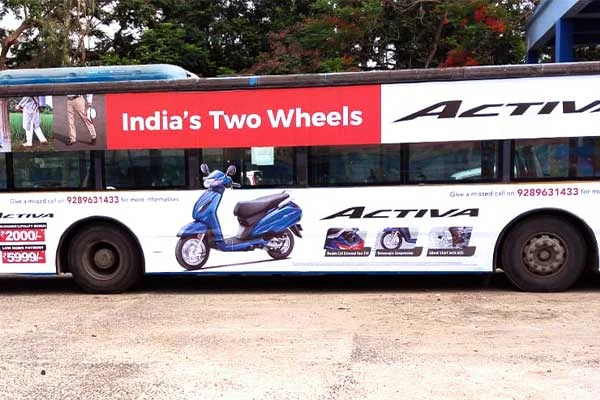- Offline Marketing
- 21 Aug, 2023
In the dynamic realm of advertising, marketers are continually seeking inventive methods to connect with their desired audiences.
One such avenue that has stood the test of time is bus advertising. From traditional posters to dynamic digital displays, bus advertising has seen a transformation in recent years.
This blog explores the latest trends in bus advertising and what strategies are proving to be effective in capturing the attention of consumers.
- Digitalization and Dynamic Content of Bus Advertising
Gone are the days of static posters plastered on the sides of buses. Many buses now feature LED screens that allow advertisers to display vibrant, eye-catching content that can change dynamically. This opens up new possibilities for real-time updates, interactive campaigns, and targeted messaging.
Brands can now tailor their advertisements based on location, time of day, and even weather conditions.
- Geo Targeting and Personalization
With the integration of GPS technology, buses can now be equipped with geotargeting capabilities. Advertisers can take advantage of this by delivering location-specific advertisements to passengers.
For instance, a bus passing by a shopping mall can display ads for ongoing sales or promotions in that particular mall. This level of personalization allows brands to connect with consumers at the right time and in the right place.
- Interactive Campaigns for Bus Advertising
Interactive campaigns have become a powerful trend in various forms of advertising, and bus advertising is no exception. Advertisers are finding creative ways to engage passengers by incorporating interactive elements in their ads.
QR codes, NFC tags, and augmented reality experiences are just a few examples of how brands are encouraging people to actively participate in their campaigns.

- Environmental Consciousness
In today's environmentally conscious society, sustainability matters. As a result, there is a growing trend in eco-friendly bus advertising solutions. Advertisers are opting for biodegradable materials and eco-friendly inks for their posters and wraps.
Additionally, some companies are investing in electric buses as advertising platforms, aligning their brand message with their commitment to sustainability.
- Integration with Mobile Advertising
Mobile devices have become an integral part of our lives, and advertisers are tapping into this trend by integrating bus advertising with mobile advertising strategies.
For example, an ad displayed on a bus might prompt passengers to interact with the brand through their smartphones, offering exclusive deals or access to additional content. This seamless integration between bus advertising and mobile marketing creates a multi-channel approach that enhances brand engagement and recall.
- Data-Driven Advertising
As with most modern marketing strategies, data-driven advertising is becoming increasingly prevalent in bus advertising. Advertisers are leveraging data analytics to gain insights into consumer behaviour, preferences, and demographics.
This data-driven approach helps in optimising ad placements, content, and messaging, ensuring that the right ads reach the right audience at the right time.
Conclusion
Bus advertising has evolved from static posters to dynamic, interactive, and data-driven campaigns. The integration of technology, personalization, and environmental consciousness has given this age-old advertising medium a fresh lease of life.
By keeping up with these trends, brands can effectively capture the attention of their target audience and create lasting impressions.